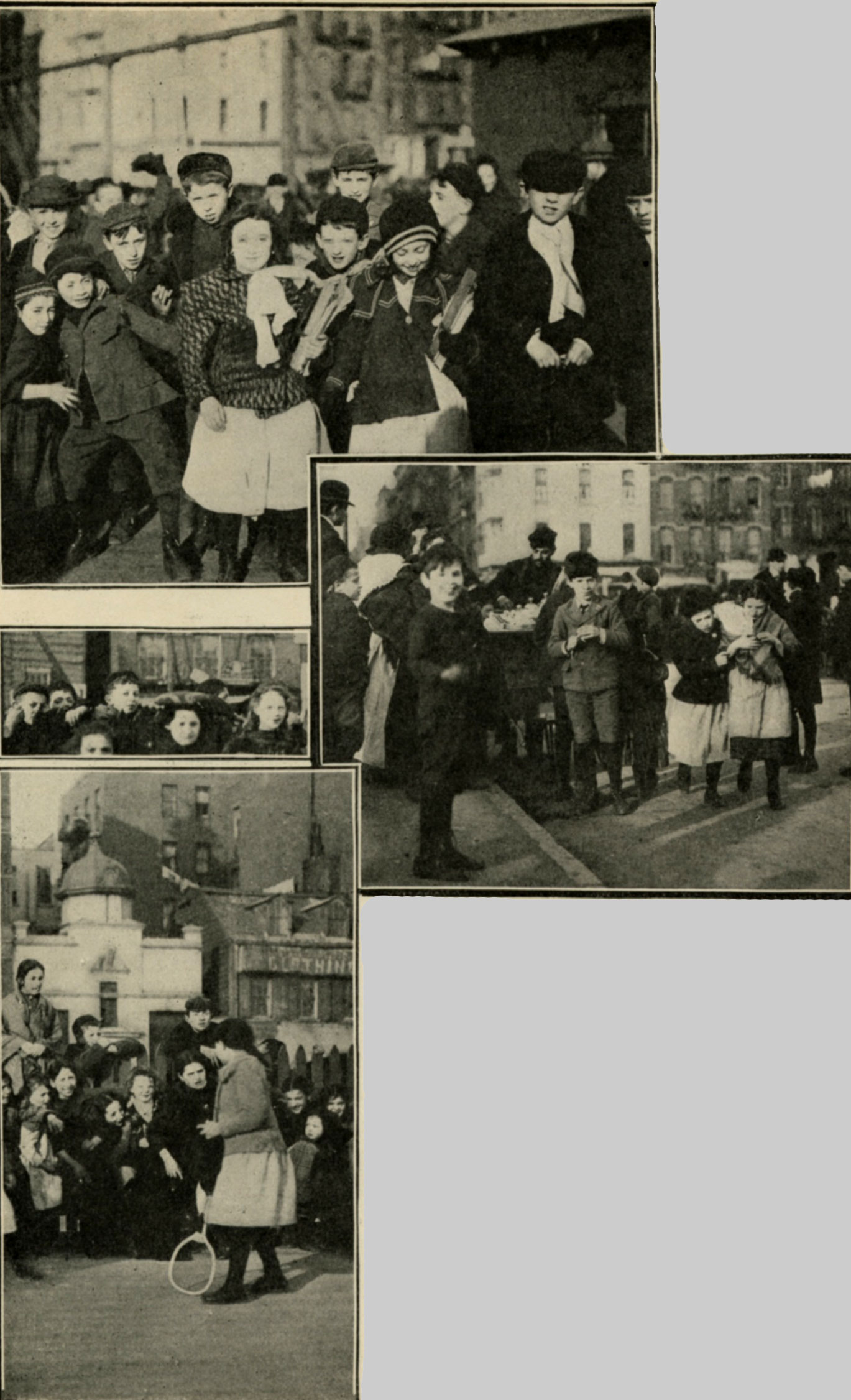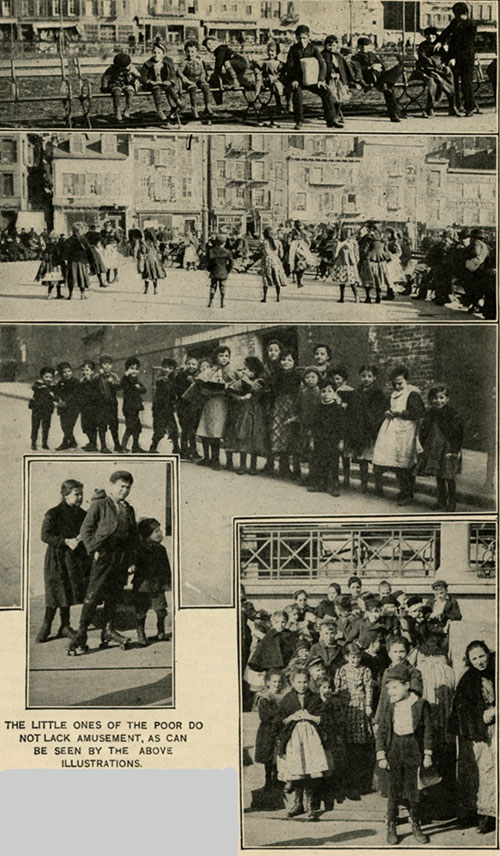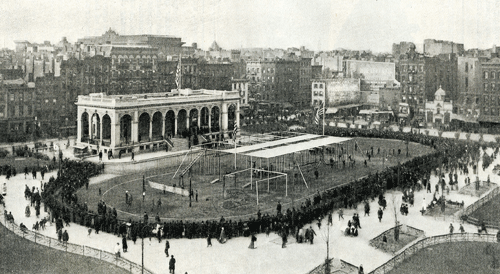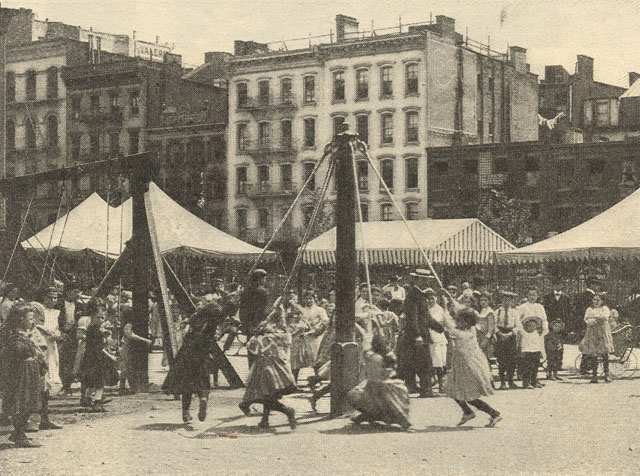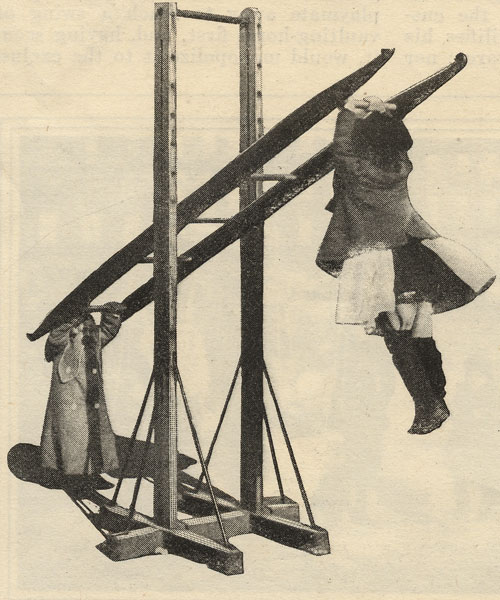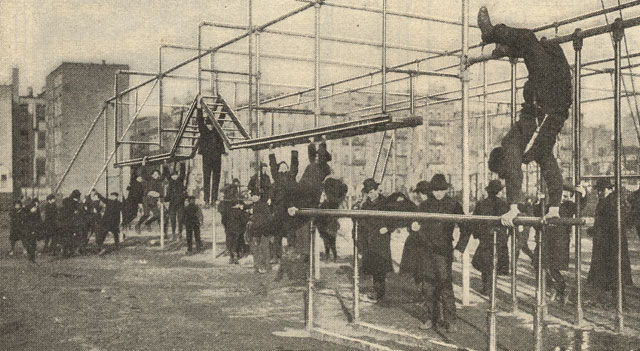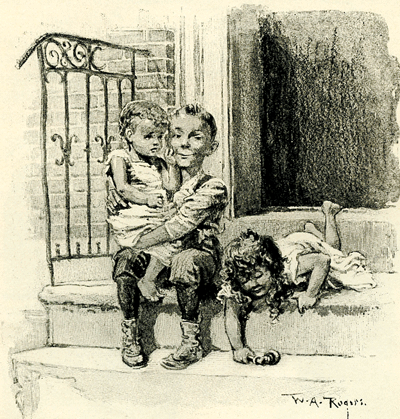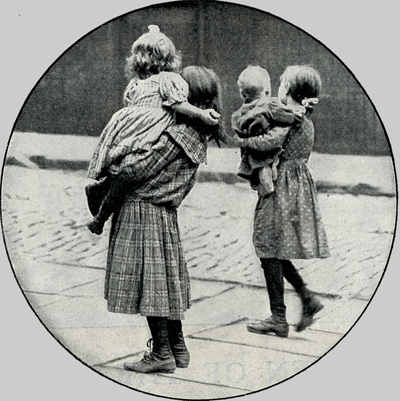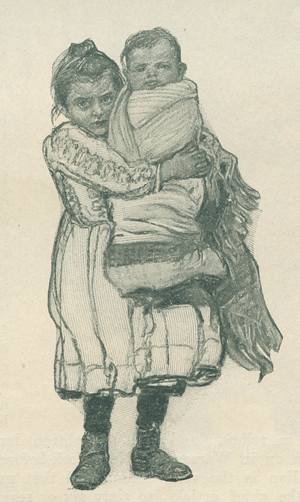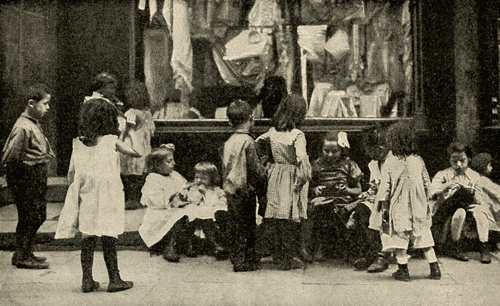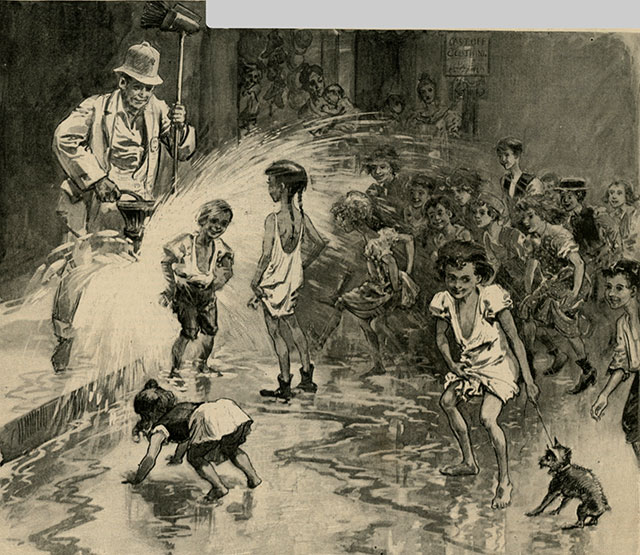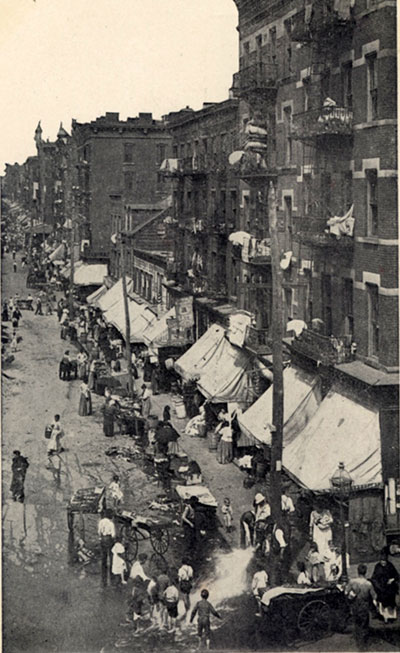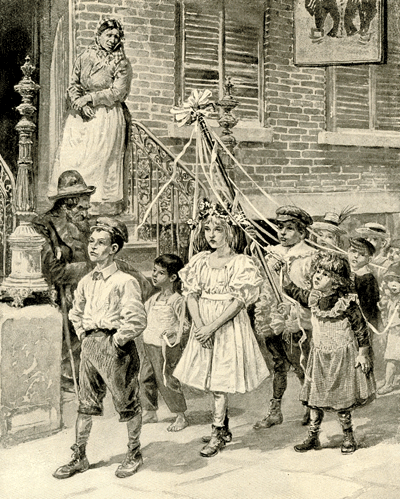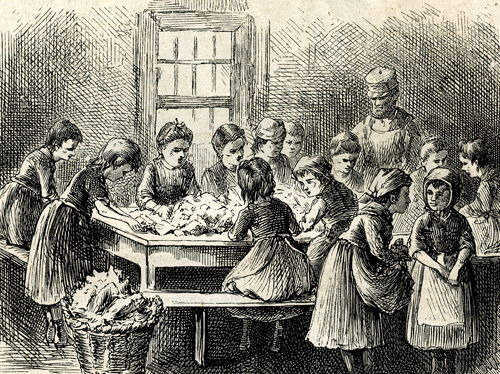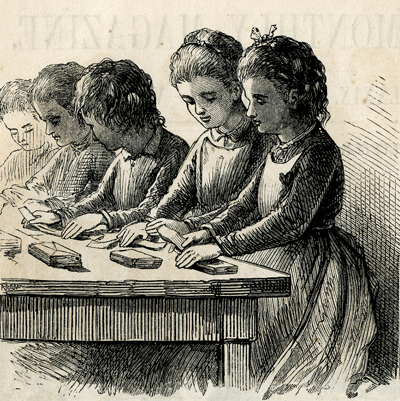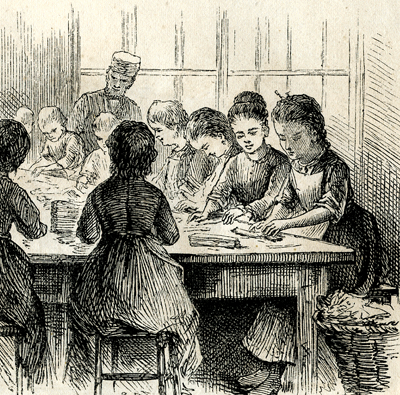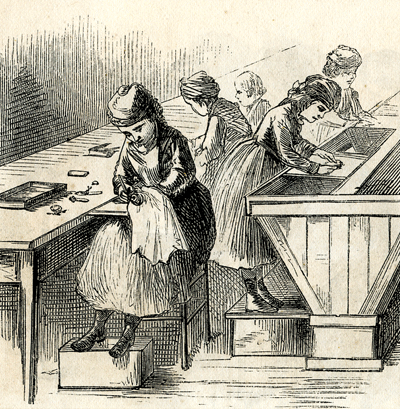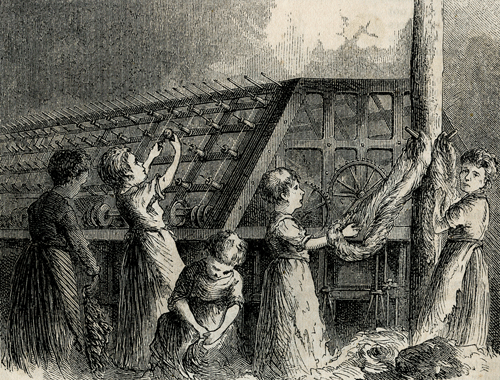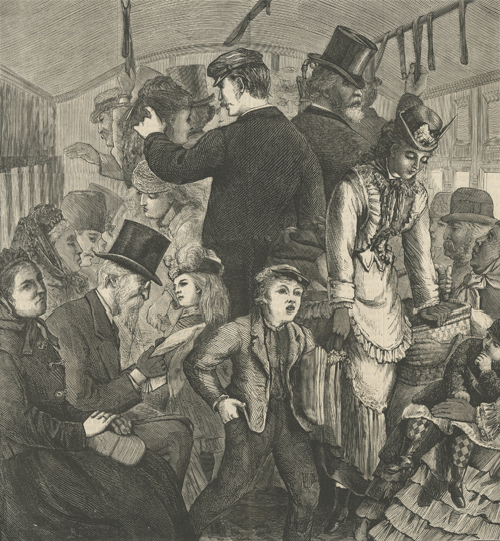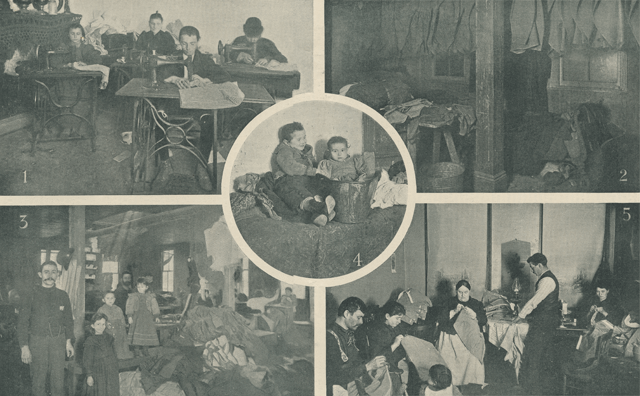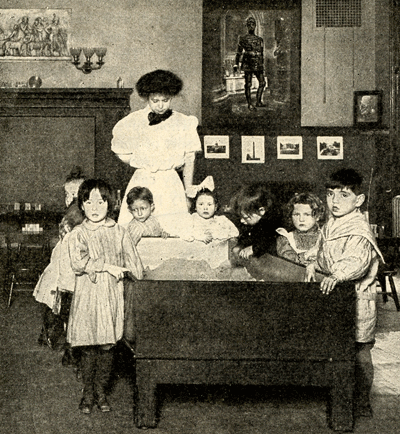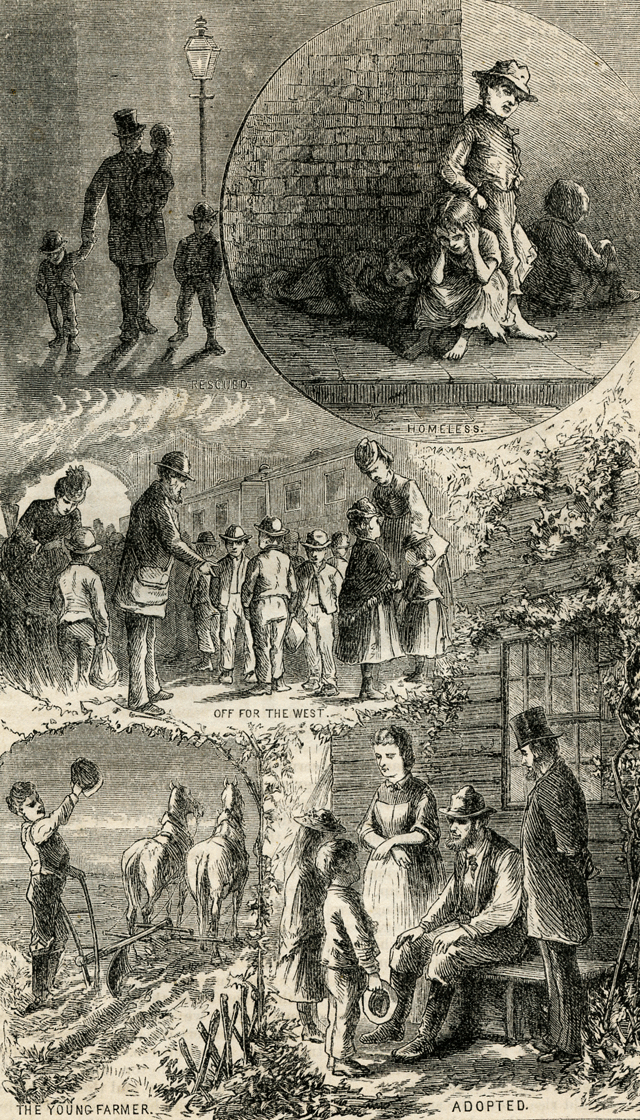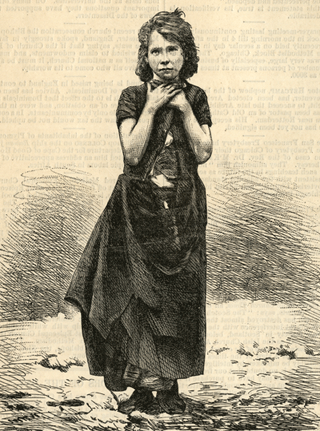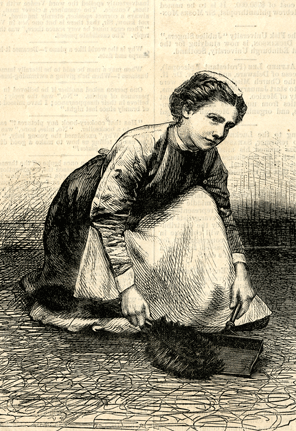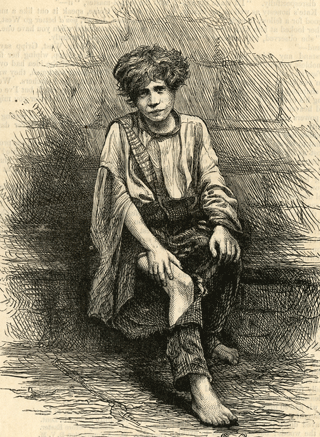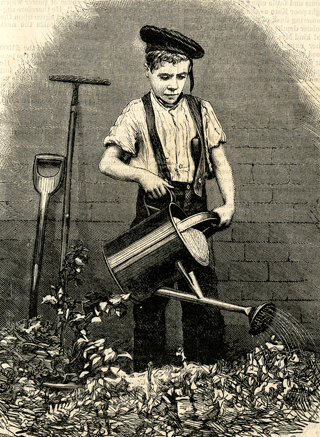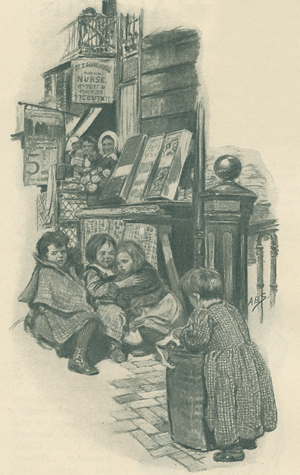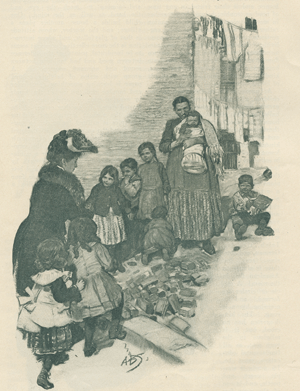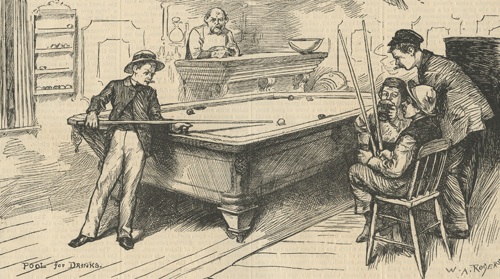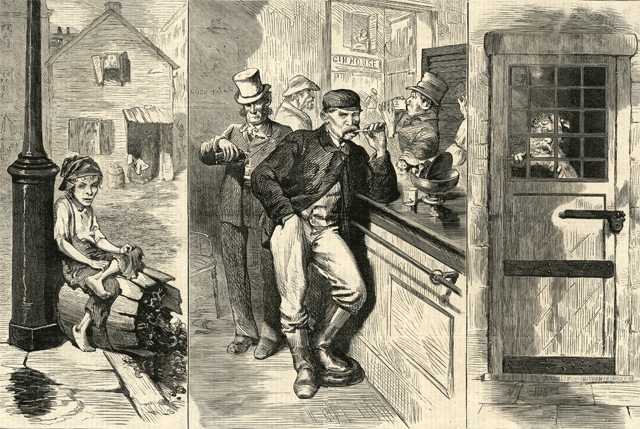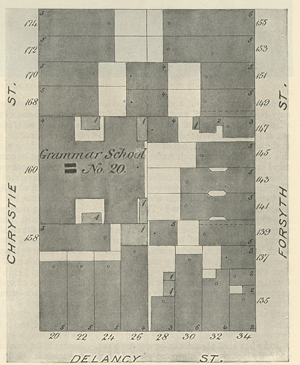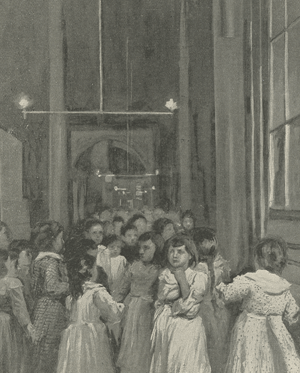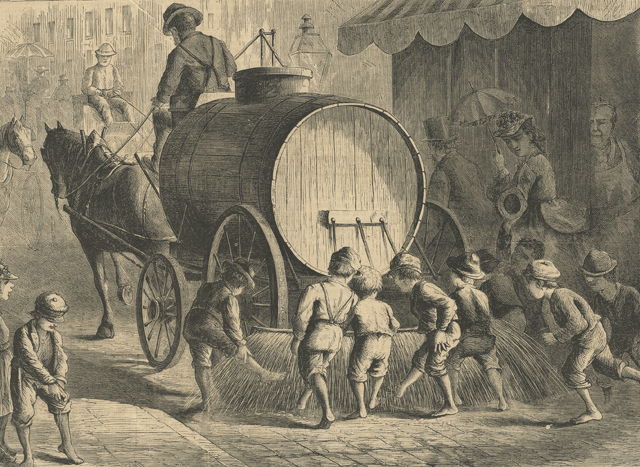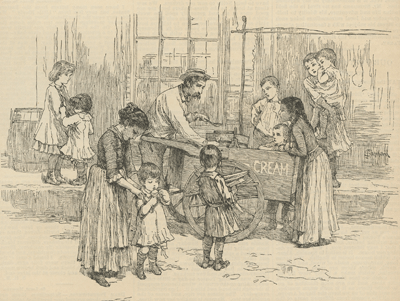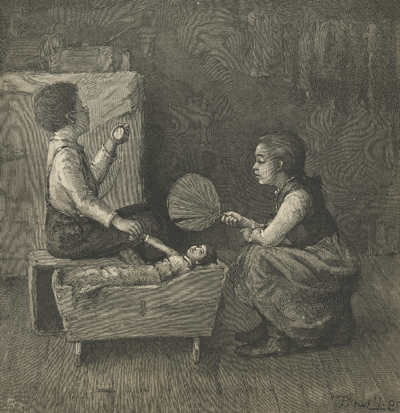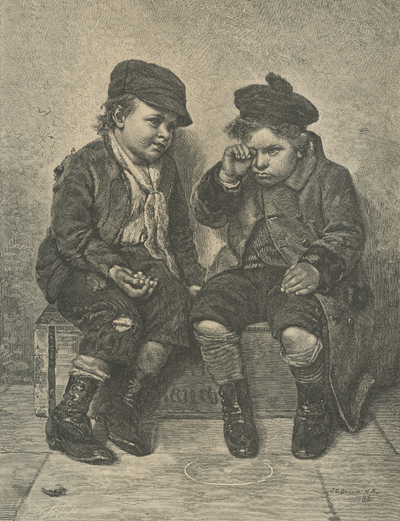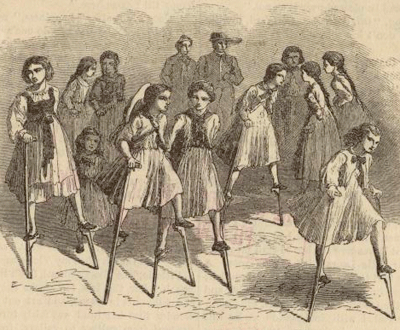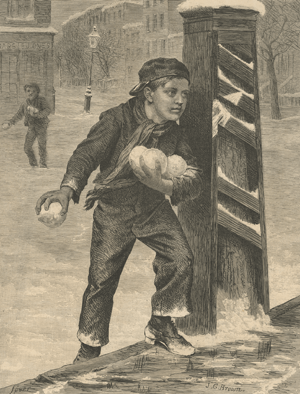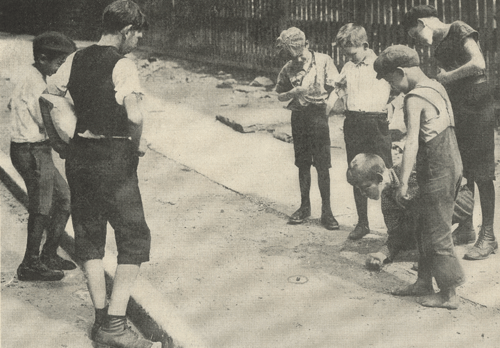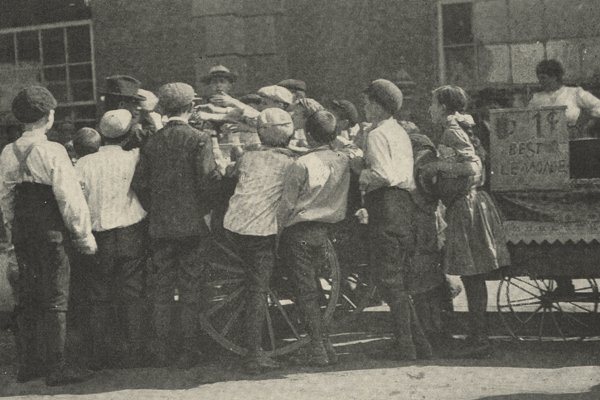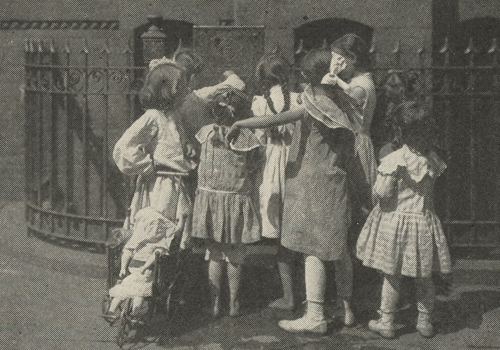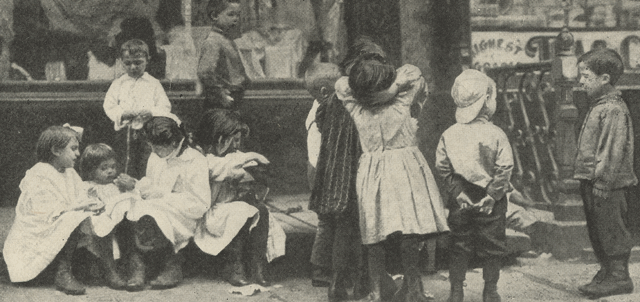LXVIII. STREET CHILDREN.
In spite of the labors of the Missions and the Reformatory Institutions,
there are ten thousand children living on the streets of New York,
gaining their bread by blacking boots, by selling newspapers, watches,
pins, etc., and by stealing. Some are thrust into the streets by
dissolute parents, some are orphans, some are voluntary outcasts, and
others drift here from the surrounding country. Wherever they may come
from, or however they may get here, they are here, and they are nearly
all leading a vagrant life which will ripen into crime or pauperism.
The newsboys constitute an important division of this army of homeless
children. You see them everywhere, in all parts of the city, but they
are most numerous in and about Printing House Square, near the offices of
the great dailies. They rend the air and deafen you with their shrill
cries. They surround you on the sidewalk, and almost force you to buy
their papers. They climb up the steps of the stage, thrust their grim
little faces into the windows, and bring nervous passengers to their feet
with their shrill yells; or, scrambling into a street car, at the risk of
being kicked into the street by a brutal conductor, they will offer you
their papers in such an earnest, appealing way, that, nine times out of
ten, you buy from sheer pity for the child.
The boys who sell the morning papers are very few in number. The
newspaper stands seem to have the whole monopoly of this branch of the
trade, and the efforts of the newsboys are confined to the afternoon
journals--especially the cheap ones--some of which, however, are dear
bargains at a penny. They swarm around the City Hall, and in the eastern
section of the city, below Canal street; and in the former locality, half
a dozen will sometimes surround a luckless pedestrian, thrusting their
wares in his face, and literally forcing him to buy one to get rid of
them. The moment he shows the least disposition to yield, they commence
fighting among themselves for the "honor" of serving him. They are
ragged and dirty. Some have no coats, no shoes, and no hat. Some are
simply stupid, others are bright, intelligent little fellows, who would
make good and useful men if they could have a chance.
The majority of these boys live at home, but many of them are wanderers
in the streets, selling papers at times, and begging at others. Some pay
their earnings, which rarely amount to more than thirty cents per day, to
their mothers--others spend them in tobacco, strong drink, and in
visiting the low-class theatres and concert halls.
Formerly, these little fellows suffered very much from exposure and
hunger. In the cold nights of winter, they slept on the stairways of the
newspaper offices, in old boxes or barrels, under door steps, and
sometimes sought a "warm bed" on the street gratings of the printing
offices, where the warm steam from the vaults below could pass over them.
The Bootblacks rank next to the newsboys. They are generally older;
being from ten to sixteen years of age. Some are both newsboys and
bootblacks, carrying on these pursuits at different hours of the day.
They provide themselves with the usual bootblack's "kit," of box and
brushes. They are sharp, quick-witted boys, with any number of bad
habits, and are always ready to fall into criminal practices when enticed
into them by older hands. Burglars make constant use of them to enter
dwellings and stores and open the doors from the inside. Sometimes these
little fellows undertake burglaries on their own account, but they are
generally caught by the police.
The bootblacks are said to form a regular confraternity, with fixed laws.
They are said to have a "captain," who is the chief of the order, and to
pay an initiation fee of from two dollars downwards. This money is said
to find its way to the pockets of the captain, whose duty it is to "punch
the head" of any member violating the rules of the society. The society
fixes the price of blacking a pair of boots or shoes at ten cents, and
severely punishes those who work for a less sum. They are at liberty,
however, to receive any sum that may be given them in excess of this
price. They surround their calling with a great deal of mystery, and
those who profess to be members of the society flatly refuse to
communicate anything concerning its place of meeting, or its
transactions.
A large part of the earnings of the bootblacks is spent for tobacco and
liquors. These children are regular patrons of the Bowery Theatre and
the low-class concert halls. Their course of life leads to miserable
results. Upon reaching the age of seventeen or eighteen the bootblack
generally abandons his calling, and as he is unfit for any other
employment by reason of his laziness and want of skill, be becomes a
loafer, a bummer, or a criminal.
For the purpose of helping these and other outcasts, the Children's Aid
Society was organized nineteen years ago. Since then it has labored
actively among them, and has saved many from their wretched lives, and
has enabled them to become respectable and useful members of society.
The Children's Aid Society extends its labors to every class of poor and
needy children that can be reached, but makes the street children the
especial objects of its care. It conducts five lodging houses, in which
shelter and food are furnished at nominal prices to boys and girls, and
carries on nineteen day and eleven evening Industrial Schools in various
parts of the city. The success of the society is greatly, if not
chiefly, due to the labors and management of Charles Loring Brace, its
secretary, who has been the good genius of the New York street children
for nearly twenty years.
The best known, and one of the most interesting establishments of the
Children's Aid Society, is the _Newsboys' Lodging House_, in Park Place,
near Broadway. It was organized in March, 1854, and, after many hard
struggles, has now reached a position of assured success. It is not a
charity in any sense that could offend the self-respect and independence
of its inmates. Indeed, it relies for its success mainly in cultivating
these qualities in them. It is in charge of Mr. Charles O'Connor, who is
assisted in its management by his wife. Its hospitality is not confined
to newsboys. Bootblacks, street venders, and juvenile vagrants of all
kinds are welcomed, and every effort is made to induce them to come
regularly that they may profit by the influences and instruction of the
house. Boys pay five cents for supper (and they get an excellent meal),
five cents for lodging, and five cents for breakfast. Those who are
found unable to pay are given shelter and food without charge, and if
they are willing to work for themselves are assisted in doing so.
The boys come in toward nightfall, in time for supper, which is served
between six and seven o'clock. Many, however, do not come until after
the theatres close. If they are strangers, their names and a description
of them are recorded in the register. "Boys have come in," says Mr.
Brace, "who did not know their own names. They are generally known to
one another by slang names, such as the following: 'Mickety,' 'Round
Hearts,' 'Horace Greeley,' 'Wandering Jew,' 'Fat Jack,' 'Pickle Nose,'
'Cranky Jim,' 'Dodge-me-John,' 'Tickle-me-foot,' 'Know-Nothing Mike,'
'O'Neill the Great,' 'Professor,' and innumerable others. They have also
a slang dialect."
Upon being registered, the boy deposits his cap, overcoat, if he has one,
comforter, boots, "kit," or other impedimenta, in a closet, of which
there are a number, for safe keeping. He passes then to the bath tub,
where he receives a good scrubbing. His hair is combed, and if he is in
need of clothing, he receives it from a stock of second hand garments
given by charitable individuals for the use of the society. Supper is
then served, after which the boys assemble in the class room, which is
also the chapel. Here they engage in study, or are entertained by
lectures or addresses from visitors. They also sing hymns and familiar
songs, and the sitting usually terminates about nine o'clock with the
recitation of the Lord's Prayer and the singing of the Doxology. After
this they may go to bed, or play dominoes for an hour or two longer, or
repair to the gymnasium.
On Sunday evening divine service is held in the chapel. Says Mr. Brace:
"There is something unspeakably solemn and affecting in the crowded and
attentive meetings of these boys, of a Sunday evening, and in the thought
that you speak for a few minutes on the high themes of eternity to a
young audience who to-morrow will be battling with misery, temptation,
and sin in every shape and form, and to whom your words may be the last
they ever hear of either friendly sympathy or warning."
"The effect on the boys," he adds, "of this constant, patient, religious
instruction, we know to have been most happy. Some have acknowledged it,
living, and have shown better lives. Others have spoken of it in the
hospitals and on their death-beds, or have written their gratitude from
the battle field."
The officers of the Lodging House use their influence to induce the boys,
who are the most notoriously improvident creatures in the city, to save
their earnings. They have met with considerable success. There is now a
Newsboys' Savings Bank, which began in this way: A former superintendent,
Mr. Tracy, caused a large table to be provided and placed in the Lodging
House. This table contained "a drawer divided into separate
compartments, each with a slit in the lid, into which the boys dropped
their pennies, each box being numbered and reserved for a depositor. The
drawer was carefully locked, and, after an experience of one or two
forays on it from petty thieves who crept in with the others, it was
fastened to the floor, and the under part lined with tin. The
Superintendent called the lads together, told them the object of the
Bank, which was to make them save their money, and put it to vote how
long it should be kept locked. They voted for two months, and thus, for
all this time, the depositors could not get at their savings. Some
repented, and wanted their money, but the rule was rigid. At the end of
the period, the Bank was opened in the presence of all the lodgers, with
much ceremony, and the separate deposits were made known, amid an immense
deal of 'chaffing' from one another. The depositors were amazed at the
amount of their savings; the increase seemed to awaken in them the
instinct of property, and they at once determined to deposit the amounts
in the city savings banks, or to buy clothes with them. Very little was
spent foolishly. This simple contrivance has done more to break up the
gambling and extravagant habits of the class than any other one
influence. The Superintendent now pays a large interest on deposits, and
the Trustees have offered prizes to the lads who save the most." The
deposits of the boys now foot up an aggregate of about $1800.
The boys are assisted to earn their own support. Says Mr. Brace, writing
in 1870:
"Through the liberality of one of our warmest friends, and generous
trustee, B. J. Howland, Esq., a fund, which we call the 'Howland Fund,'
was established. He contributed $10, to which other patrons added their
contributions subsequently. The object of this fund is to aid poor and
needy boys, and supply them with the means to start in business. We have
loaned from this fund during the year $155.66, on which the borrowers
have realized a profit of $381.42. It will be seen that they made a
profit of 246 per cent. We loan it in sums of 5 cents and upward; in
many cases it has been returned in a few hours. At the date of our last
report there was due and outstanding of this fund $11.05, of which $5 has
since been paid, leaving $6.05 unpaid."
The work of the Lodging House for seventeen years is thus summed up by
the same authority:
"The Lodging House has existed seventeen years. During that time we have
lodged 82,519 different boys, restored 6178 lost and missing boys to
their friends, provided 6008 with homes and employment, furnished 523,488
lodgings, and 373,366 meals. The expense of all this has been
$109,325.26, of which amount the boys have contributed $28,956.67,
leaving actual expenses over and above the receipts from the boys
$80,368.59, being about $1 to each boy."
The other institutions of the Children's Aid Society are conducted with
similar liberality and success. We have not the space to devote to them
here, and pass them by with regret.
It is not claimed that the Society has revolutionized the character of
the street children of New York. It will never do that. But it has
saved many of them from sin and vagrancy, and has put them in paths of
respectability and virtue. It has done a great work among them, and it
deserves to be encouraged by all. It is sadly in need of funds during
the present winter, and will at all times make the best use of moneys
contributed towards its support.
It employs an agent to conduct its children to homes in other parts of
the country, principally in the West, as soon as it is deemed expedient
to send them away from its institutions. It takes care that all so
placed in homes are also placed under proper Christian influences.
